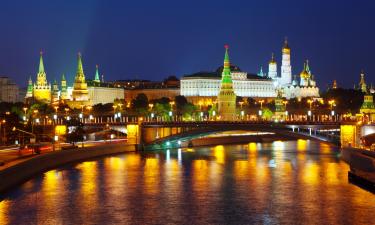Latin American Economies Recovering
Recent research released by the Economic Commission for Latin America and the Caribbean, ECLAC, says the region will grow 1.5% this year. Argentina leads with 5.5%
Analysts say Latin American countries show signs of economic recovery after 12 months of stagnation. The Economic Commission for Latin America and the Caribbean, ECLAC, forecasts 1.5% growth in 2003, from the 0.6% drop in 2002. Also, estimations show that the current account with extra-regional countries will be virtually balanced (US$ 3.7 billion, or about -0.2% of GDP), for the first time since 1990.
The document, released last week by the Chile-based organization, claims that the year 2003 will be better than the last in terms of growth, employment, financial conditions and external accounts, "although 2002 is hardly a demanding basis for comparison". However, external conditions may see flat growth, as region's main engine, the United States, is not growing as forecasted, some European countries have already entered into recession (Germany), others into a poor performance (France) and Japan remains stagnant.
After marking its poorest-ever performance in 2002 (-13% GDP Growth), Argentina surprised observers as it is expected to grow up to 5.5% this year, showing clear signs of reactivation after 5 years of recession. As such, Argentina leads the ranking, although its GDP will be 17% lower than in 1997, year when the economy started declining. Argentina's recovery came after a 200% devaluation of its currency and the consequent gain in competitiveness for its agricultural products.
On the opposite side is Venezuela. The country led by Hugo Chavez will post the poorest growth, (-13%) despite a significant recovery that began in the second quarter of the year. Venezuela suffered from a storming political crisis all along 2002 and the first quarter of 2003, in which its main source of incomes, the State owned oil giant Petroleos de Venezuela (PDVSA) was almost paralyzed by striking directors. To regain control over the economy, Chavez February instrumented new mechanisms to force all individuals and entities to sell to the Central Bank all the hard currency received for their activities at the price fixed by the State. In addition, the government suspended the acquisition in bolivares (local currency) of State bonds issued in hard currency and listed a number of products as basic items, which are nowsubject to maximum prices set by the authorities.
Brazil, in turn, Latin America’s largest economy is a big question. ECLAC estimates a 1.5% growth for 2003, but figures recently released by the Brazilian Institute of Geography and Statistics, or IBGE, show an industrial drop of 2.6% for the second quarter of the year and a general stagnation in the first six months. The trend for Brazil's industry, indeed, is to keep on falling until the end of the year.
Chile's growth, in turn, will rise to 3.5%, led by export sectors, thanks to the free trade agreements sealed by this country with both, the United States and the European Union. Colombia is the only Andean economy with better prospects today than some months ago and is forecast to grow 2.5%, while Peru, the country posting the highest growth in 2002 (5.3%), should see GDP rise 3.5%. Of the economies including Cuba, Haiti, the Dominican Republic and Central America, Costa Rica will perform the best in 2003, with 4.5% growth. In Mexico recovery has been delayed but 2003 is expected to move from less to more, with growth reaching 1.5%.
According to the ECLAC, economical growth in the region has three reasons. Firstly, the deterioration in the terms of trade, which began in 1997, has ceased and in the course of this year they should improve slightly, both for the oil (1.2%) and non-oil (0.8%) economies. Latin America mainly exports commodities, as imports manufactured goods.
Secondly, international financial conditions have been improving in 2003. Net capital flows should reach US$ 40 billion, although net transfer of resources abroad will still reach US$ 15 billion, due to sizeable profit remittances and interest payments. ECLAC's report says that "access to international financial markets has improved, with spreads on sovereign debt declining from all-time peaks in the second half of 2002".
Finally, foreign exchange policy has faced a calmer year, especially for Mercosur economies. Although so far this year 12 countries have seen real appreciation against the dollar, most are enjoying more competitive exchange rates than in 2001. Argentina and Brazil had devaluated its currencies in 200%; Brazil began doing so since 1999 and Argentina untied its peso to the dollar in 2002.
Subscribe to Pravda.Ru Telegram channel, Facebook, RSS!





